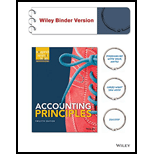
(a)
Accounting for Receivables:
Receivables are defined as the amounts that are due to a firm by its customers and other parties. Receivables include all those assets that arise due to the primary operations of a firm and those representing cash that is to be collected from all external parties who owe money to the firm.
Receivables are broadly categorized into trade-receivables and non-trade receivables. Trade receivables refer to those receivables that occur due to the sale of goods and services in the normal course of business. Non-trade receivables refer to the amounts that occur due to third parties from transactions outside the primary course of business.
Bad debts can be defined as those accounts receivable that a firm does not expect to collect and has written off to its income statement under the head, expense. They are also termed as irrecoverable debts.
Bad debts are considered as expenses, as they are not anticipated to generate any financial benefits in the future. It leads to a corresponding decrease in the balance of accounts receivable on the
To prepare: The accounts receivable aging schedule for R Company.
(b)
To compute: The amount of the year-end adjustment necessary to bring Allowance for Doubtful Accounts to the balance indicated by the age analysis and prepare the journal
(c)
To identify: The steps R Company might consider to improve the accounts receivable situation and evaluate each step in terms of the risks and costs involved.
Want to see the full answer?
Check out a sample textbook solution
Chapter 9 Solutions
Accounting Principles 12E WileyPLUS with Loose-Leaf Print Companion with WileyPLUS Leanring Space Card Set
- How can I solve this financial accounting problem using the appropriate financial process?arrow_forwardIf $7,500 was the beginning inventory, purchases were $16,200, and cost of goods sold were $15,300, how much was the ending inventory last accounting period? helparrow_forwardPlease provide the correct answer to this general accounting problem using valid calculations.arrow_forward
- If the contribution margin ratio for Victory Electronics is 35%, sales were $2,450,000, and fixed costs were $712,500, what was the income from operations?arrow_forwardI need help with this general accounting question using the proper accounting approach.arrow_forwardI am looking for the most effective method for solving this financial accounting problem.arrow_forward

 AccountingAccountingISBN:9781337272094Author:WARREN, Carl S., Reeve, James M., Duchac, Jonathan E.Publisher:Cengage Learning,
AccountingAccountingISBN:9781337272094Author:WARREN, Carl S., Reeve, James M., Duchac, Jonathan E.Publisher:Cengage Learning, Accounting Information SystemsAccountingISBN:9781337619202Author:Hall, James A.Publisher:Cengage Learning,
Accounting Information SystemsAccountingISBN:9781337619202Author:Hall, James A.Publisher:Cengage Learning, Horngren's Cost Accounting: A Managerial Emphasis...AccountingISBN:9780134475585Author:Srikant M. Datar, Madhav V. RajanPublisher:PEARSON
Horngren's Cost Accounting: A Managerial Emphasis...AccountingISBN:9780134475585Author:Srikant M. Datar, Madhav V. RajanPublisher:PEARSON Intermediate AccountingAccountingISBN:9781259722660Author:J. David Spiceland, Mark W. Nelson, Wayne M ThomasPublisher:McGraw-Hill Education
Intermediate AccountingAccountingISBN:9781259722660Author:J. David Spiceland, Mark W. Nelson, Wayne M ThomasPublisher:McGraw-Hill Education Financial and Managerial AccountingAccountingISBN:9781259726705Author:John J Wild, Ken W. Shaw, Barbara Chiappetta Fundamental Accounting PrinciplesPublisher:McGraw-Hill Education
Financial and Managerial AccountingAccountingISBN:9781259726705Author:John J Wild, Ken W. Shaw, Barbara Chiappetta Fundamental Accounting PrinciplesPublisher:McGraw-Hill Education





